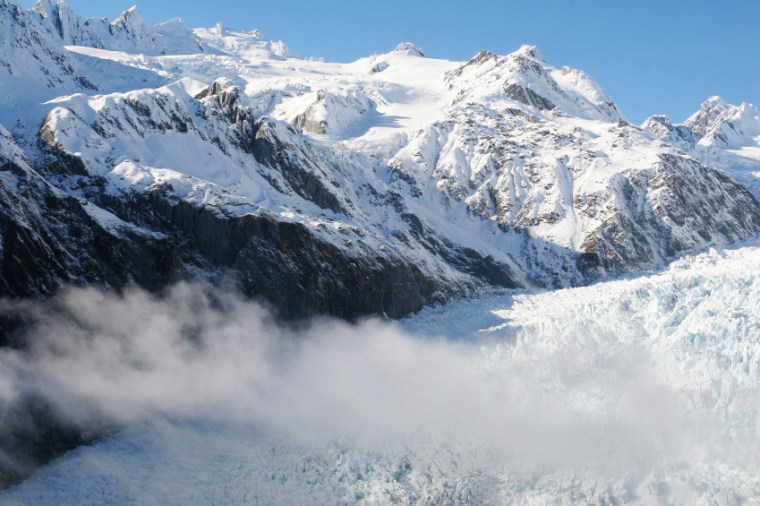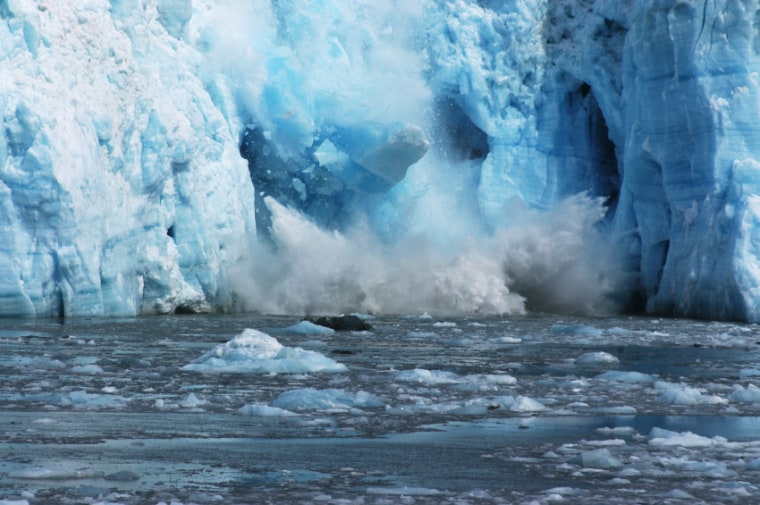When Bernadette Smith visited the Perito Moreno Glacier as part of a year-long visit to South America, she found herself overwhelmed by the sheer immensity of the ice mass.
“The whole experience was awe-inspiring and I would definitely put it up there as one of the highlights of Argentina,” she says. But with the looming reality of global warming, this experience may soon become almost unattainable. Perito Moreno is what’s called a temperate glacier.
“Temperate glaciers have temperatures close to the melting point of water, so a small amount of climate change has a large impact,” says Bruce Molnia, a scientist at the U.S. Geological Survey who has been studying glaciers and other topics related to global water supply for more than 40 years. “The temperate glaciers are very sensitive indicators to climate change. ... More than 99 percent of them are presently shrinking.” Glaciers are dynamic masses, meaning that they are always in movement and advancing or retreating. But the level of retreat has been alarming scientists for several decades.
Perito Moreno itself is one of the most stable of the temperate glaciers. However, it is an exception: of the 50 or so southern Patagonian glaciers, only three are advancing. (Perito Moreno is one of them.) The story is similar around the world—many of the most iconic temperate glaciers are in danger. Mount Kilimanjaro, along with its Furtwängler Glacier, famously inspired Ernest Hemingway, as well as thousands of less literary-minded visitors. But it is likely to be but a memory to them and everyone else by the 2020s.
In the Alps, glaciers have already been retreating for hundreds of years (although none have disappeared completely yet). Austria’s largest glacier, Pasterze, is representative of what’s going on in the region. It has been receding since the mid-19th century, and could lose up to 60 percent of its remaining mass by 2100. In Alaska, eight of the nine largest glaciers are retreating.
Of course, the world’s glaciers won't disappear completely, says Molnia. Temperate glaciers account for less than one percent of the global glacier total. The rest are polar glaciers, which are generally “many tens of degrees below the freezing point” and therefore less susceptible to incremental global warming. Some polar glaciers might get smaller, especially those that touch the ocean, but they will not be disappearing anytime soon.

Ironically, the melting ice is leading to an increase in Antarctic tourism. More than 35,000 visitors are expected in the next year; that's many times the number a decade or two ago. Most of these tourists journey by ship from South America to the Antarctic Peninsula, with its increasingly accessible mountains, bays, glaciers and icebergs. The International Association of Antarctica Tour Operators was formed in 1991 to prevent environmental damage to the continent by human visitors.

One may wonder, then, if tourists should be visiting glaciers in the first place. But according to Molnia, there is little, if any, direct damage to glaciers as a result of tourism. Instead, according to Molnia, Antarctic glaciers suffer from the impact of increased waste: "Dumping oil and air pollution and a number of other things.” There are some laws in place to protect the frozen continent, but they have so far proven largely ineffective.
It's even possible that glaciers can be more dangerous for tourists than tourists are for glaciers. “Every year three or four tourists lose their lives by falling into crevasses or into surface glacier stream channels called moulins,” says Molnia. For those unfamiliar with the landscape and composition of glaciers, hiring a guide is crucial. “Going on your first glacier by yourself is not the best way of doing it,” he says.
At many of the world’s most visited glaciers, setting foot on the ice mass is not necessary in order to experience their beauty. At Perito Moreno, for example, there are three separate viewing areas constructed to make the experience minimally hazardous for tourists. And in Alaska, visitors can travel by boat through Glacier Bay, seeing numerous major glaciers in one day, including the spectacularly massive Margerie and Grand Pacific glaciers.
